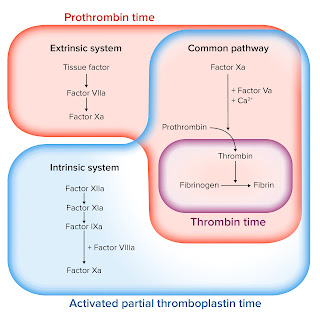hand out for coagulation tests with sysmex5100

COAGULATION CASCADE blood clotting mechanism is explained by cascade theory. it consists of 2 major division primary coagulation secondary coagulation. Primary coagulation. Primary coagulation, also known as primary hemostasis, is the initial phase of blood clotting that occurs in response to vascular injury. It involves the formation of a temporary platelet plug to stop bleeding. When blood vessels are damaged, platelets adhere to the site of injury, become activated, and aggregate to form a plug. This process is mediated by various factors including von Willebrand factor (vWF), collagen exposed by injury, and the release of platelet agonists such as ADP and thromboxane A2. Once the platelet plug is formed, it provides a surface for the activation of the coagulation cascade, leading to the formation of a stable blood clot through secondary hemostasis. Primary coagulation is essential for the prevention of excessive bleeding and the initiation of the overall hemostat...